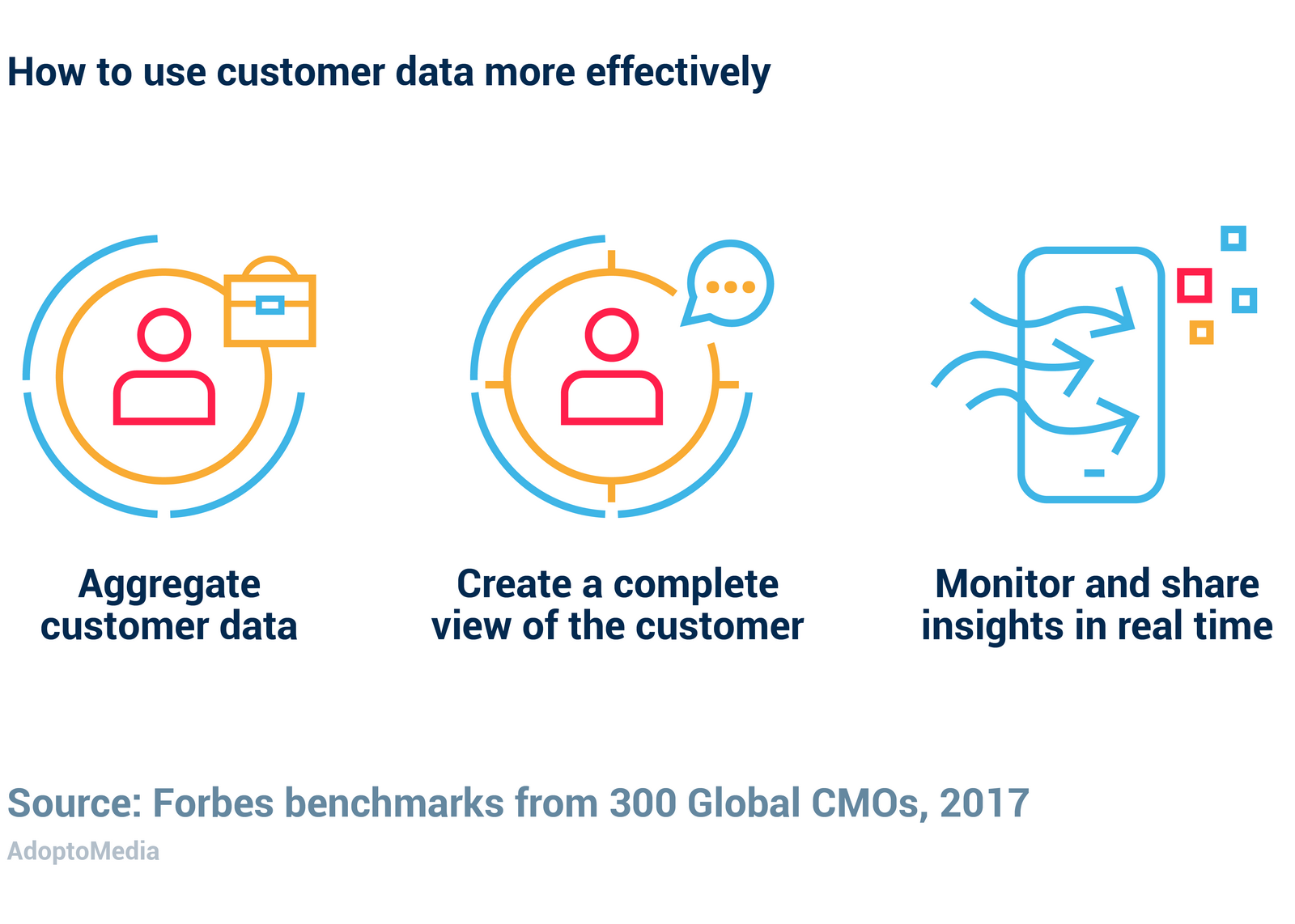 Today, around 10% of revenue is allocated to marketing, and in 2018 these spends amounted approximately to a trillion dollars worldwide. All marketers are under pressure to justify such huge investments, but top professionals know how to cope with it. In this article you will find out how to become a high-performing marketer as well as increase accountability and transparency in your company.
Today, around 10% of revenue is allocated to marketing, and in 2018 these spends amounted approximately to a trillion dollars worldwide. All marketers are under pressure to justify such huge investments, but top professionals know how to cope with it. In this article you will find out how to become a high-performing marketer as well as increase accountability and transparency in your company.
Despite all technological advancements in the industry, accurate quantification of marketing contribution remains a serious challenge, mainly because there are no universal standards in this area. Forbes addressed the problem by establishing an initiative together with the Marketing Accountability Standards Board aimed at helping businesses better measure, optimize and understand the contribution of marketing. They also conducted a research involving 800 CMOs to select the most effective tools, strategies and approaches available now. Every detail matters, all promotion channels, traditional and digital must be used in the most effective and efficient way, every investment should be a well-informed decision. Today data is power, so it doesn’t come as a surprise when experts mention it among analytics and martech that improve marketing performance. Here are nine key takeaways from the research that can help a company gain accurate real-time insights, achieve superior results and drive growth.
-
Appoint more staff to the development of data and analytics. For example, leading marketers have 27% more people dedicated to these tasks.
-
Invest in digital, social media and mobile marketing focusing on every element of customer journey (awareness, engagement, etc.).
-
Quickly reallocate investments between channels and products. The newest measurement and forecasting technology allows fast adaptation to changes even on a daily basis.
-
Immediately implement customer insights you get with advanced systems.
-
Make the process of data aggregation, integration and interpretation as fast as possible.
-
Clearly explain current trends to the leadership by using dashboards, visualization or context, since it simplifies decision-making.
-
Share information across business units.
-
Demonstrate key metrics and data to C-suite executives when discussing reallocation decisions.
-
Develop marketing accountability by working on 12 aspects of your organization that are covered further.
Let’s take a closer look into some areas mentioned above, starting with customer data. Over the last 40 years, marketing has shifted its focus from products to the people who buy it. Millions of people engage with brand every day, both online and offline, so all this information from numerous touch points should be quickly collected, integrated and analyzed. Constant changes, competitors’ activities and other factors complicate the process even further but companies see its importance, because daily customers’ experience impacts enterprise value. That’s why marketers need to share real-time customer insights with leadership to influence decision-making. Improving customer relationship is only one of 18 ways that marketers contribute to enterprise value. Giants like Microsoft, McDonald’s, Starbucks are implementing customer experience management platforms, that process huge amounts of data, manage thousands of accounts, analyze millions of conversations. Here are three steps that help stay updated and put insights to action on time.

-
Invest in technology that makes the first-, second- and third-party data consolidation process simpler and faster. Start with internal data (web analytics, CRM), then cover third- and second-party platforms (content management, e-commerce, paid digital media, social accounts) to further improve models.
-
Create a comprehensive customer profile by connecting details like email address, social ID, phone number, etc. on a customer experience management platform. Social media makes it easy to connect online and offline data by giving users universal identifiers.
-
Set up command centers that will help you make critical decisions about brand development, keep up with customer data insights, improve customer experience and service quality. By monitoring people’s reactions in real time you can fine tune any marketing activity, shift investments, adapt strategies or tactics, forecast and prevent possible inconveniences to improve brand experience.
The next thing we focus on is marketing accountability, which is a company’s ability to measure and optimize its marketing effectiveness. The major obstacle here is the lack of unified standards, that is why you need to define what success looks like in your particular case and understand your current level of business effectiveness before choosing a suitable approach. Since advertising campaigns are increasingly run across various media today, you will most likely use one of the four cross-media measurement tools. Top marketers prioritize accountability and prefer to base decisions on data-driven insights, rather than gut feeling, which results in 5% higher ROMI and 7% better growth. Many are going to increase investments in measurement and analytics by at least 25% in the nearest future. In the table below there are more resources they turn to when estimating efficiency of their investments.

By implementing wide range of techniques, top marketers identify strengths and growth potential, optimize spends, better understand the contribution and performance of their media portfolio and each element in it (what drives sales, how it contributes to growth). With optimal budget allocation they achieve outstanding results:
-
higher brand awareness and preference through perfect use of social media
-
more customer engagement
-
higher demand, and lead volumes
-
better sales
Before using these tools objectively assess the company’s capabilities and find a suitable way to organize the team. Don’t bite off more than you can chew; rather trust experienced partners with too difficult “pieces”, while gradually building up progress.
To build a higher accountability level you should work on the 12 following aspects, that have been proven effective by top marketers.
-
High level of integration between company business units, marketing and CEO;
-
Advanced measurement and analytical capabilities;
-
Collaboration between departments, aligned to the overall strategy;
-
Centralized marketing investments funding processes for higher ROMI;
-
Common planning process that is frequently updated and data-driven;
-
Information sharing across the company;
-
Common measures of financial contribution of marketing;
-
Establishing common rewards for marketing and other business units based on common KPIs;
-
Common KPIs to easier measure marketing contribution.;
-
Creating unified customer profiles with aggregated data from online and offline touch points;
-
Forecasting, Planning and Attribution models that implement a lot of data;
-
Integration of data from numerous sources to achieve stronger measurement models.
Forbes evaluates the level of marketing accountability maturity on a three-point scale based on the state of the above 12 elements. AdoptoMedia offers a platform that can upgrade a company to the highest accountability maturity level. It’s a software that can be seamlessly integrated into existing IT infrastructure. This innovative solution forecasts ROMI, measures it in real time and generates dashboards to visualize modeling results. You can easily calculate optimal marketing budget by product or channel and eliminate ineffective ones. In this case study of modeling a bank’s media mix ROMI increased by 15% as a result of our solution implementation. Also, it allows for in-campaign tactical changes, which means you can achieve the highest efficiency without having to wait to put your insights to action. With this tool your company can achieve best-in-class marketing transparency and accountability, optimize expenses, boost marketing performance and generate actionable tactical decisions based on data-driven insights.


